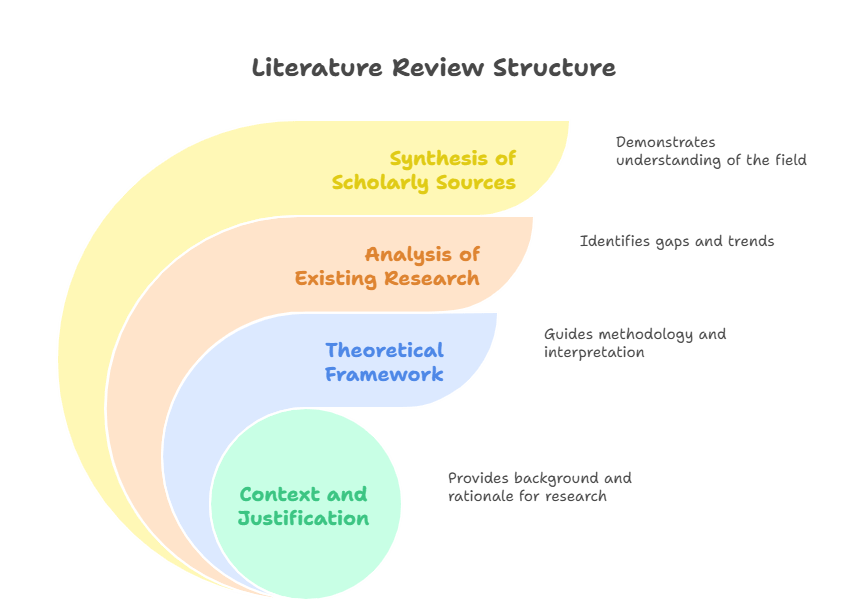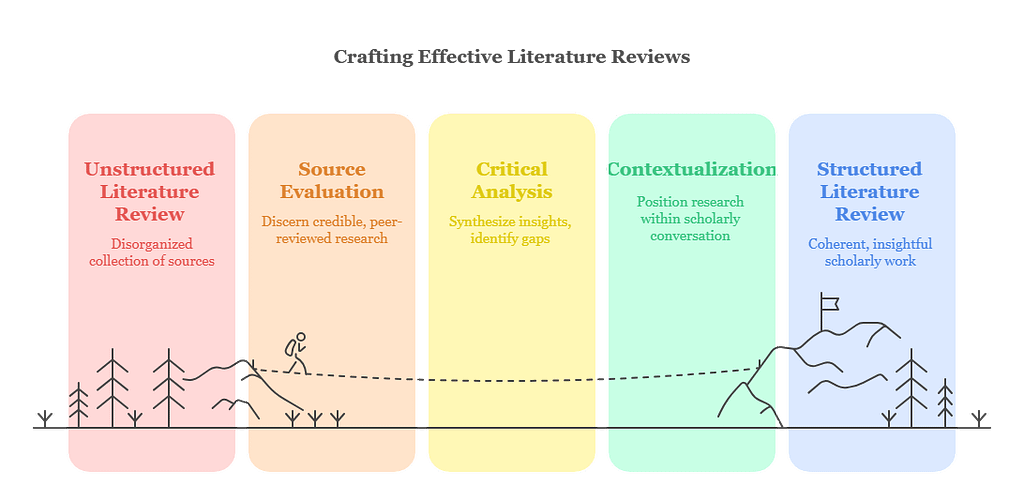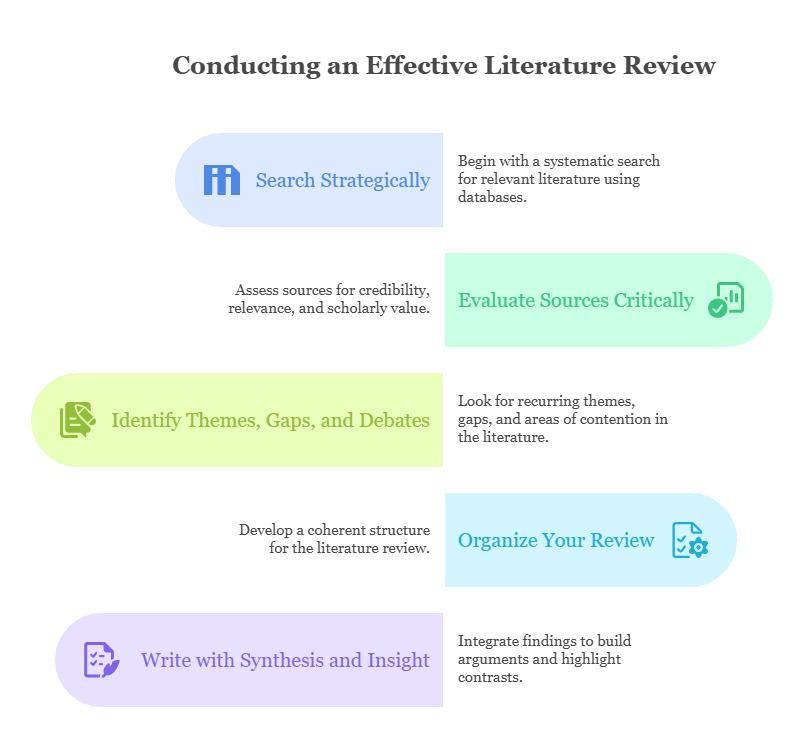A literature review is a critical and comprehensive analysis of existing research on a particular topic. It forms a foundational element in academic writing, especially in research papers, theses, dissertations, and funding proposals. According to Machi and McEvoy (2016), a literature review is not merely a summary of scholarly sources but a synthesis that demonstrates the researcher’s understanding of the research landscape and identifies gaps, trends, and emerging themes in the field.
The primary purpose of a literature review is threefold:
(1) to provide context for the research question,
(2) to justify the need for the study by identifying gaps or inconsistencies in existing literature.
(3) to establish a theoretical framework that guides the methodology and interpretation of results.
Creswell (2014) asserts that a well-conducted literature review builds a logical framework for research and narrows the study’s focus to a manageable and meaningful scope.

In many academic works, the literature review appears as a distinct chapter or section, helping researchers contextualize their inquiries within the broader scholarly conversation. It shows how their work either contributes new insights or challenges prevailing assumptions. In grant proposals, a thorough literature review underscores the significance and innovation of the proposed research. Additionally, stand-alone literature reviews often published as review articles offer comprehensive, sometimes historical, perspectives on a given research area, tracing the development of ideas and methodologies over time.
Conducting a literature review requires a structured and thoughtful approach. It involves more than compiling citations; it is an exercise in critical thinking, synthesis, and scholarly judgment. Booth, Sutton, and Papaioannou (2016) highlight the importance of distinguishing between high-quality, peer-reviewed research and less credible sources, ensuring that the review rests on a solid academic foundation.

Below is a step-by-step guide to conducting an effective literature review:
- Search Strategically: Begin with a systematic search for relevant academic literature using databases such as JSTOR, Scopus, Web of Science, and Google Scholar. Select keywords carefully to ensure comprehensive coverage and use Boolean operators to refine results.
- Evaluate Sources Critically: Once you have identified potential sources, assess each for credibility, relevance, and scholarly value. Consider the methodology, the reputation of the journal, the expertise of the authors, and the currency of the research.
- Identify Themes, Gaps, and Debates: As you analyse the literature, look for recurring themes, theoretical frameworks, methodological trends, and significant findings. Pay special attention to areas of contention or inconsistency. Most importantly, note where gaps exist—these represent opportunities for your research to contribute meaningfully to the field.
- Organize Your Review: Develop a coherent structure for your literature review. It can be organized chronologically, thematically, or methodologically, depending on the nature of your topic and the body of literature available. A well-organized narrative is key to guiding readers through the scholarly conversation.
- Write with Synthesis and Insight: When writing, do not simply summarize individual studies. Instead, integrate findings from multiple sources to build arguments, highlight contrasts, and show how your study connects to or diverges from prior work. Make clear how your research will address existing gaps and contribute new understanding to the topic.

A literature review is thus a cornerstone of academic scholarship. It not only demonstrates the researcher’s command over the field but also establishes a strong foundation upon which original inquiry can be built. Hart (1998) emphasizes that “the literature review is the interpretive synthesis of relevant writings that helps to illuminate a problem,” underscoring its centrality in scholarly endeavours.
By following a systematic process, researchers can produce literature reviews that are both rigorous and insightful. Whether embedded in a thesis, supporting a funding proposal, or standing alone as a review article, a well-crafted literature review elevates the credibility and scholarly impact of any academic work.
References
- Booth, A., Sutton, A., & Papaioannou, D. (2016). Systematic Approaches to a Successful Literature Review (2nd ed.). Sage Publications.
- Creswell, J. W. (2014). Research Design: Qualitative, Quantitative, and Mixed Methods Approaches (4th ed.). Sage Publications.
- Hart, C. (1998). Doing a Literature Review: Releasing the Social Science Research Imagination. Sage Publications.
- Machi, L. A., & McEvoy, B. T. (2016). The Literature Review: Six Steps to Success (3rd ed.). Corwin Press.
Let Scholar Foundry Be Your Research Partner
Join a vibrant community of thinkers and change-makers. Scholar Foundry’s conferences are more than events—they are incubators of innovation, collaboration, and academic excellence.
Take the First Step Toward a Successful Research Journey
Contact us Today to Schedule Your Free Consultation

Pingback: 8 Research Writing Mistakes & How to Avoid Them